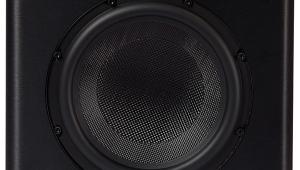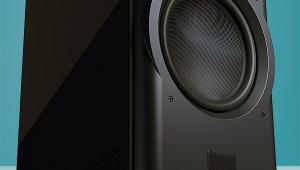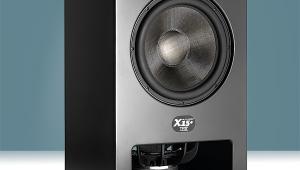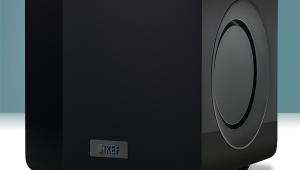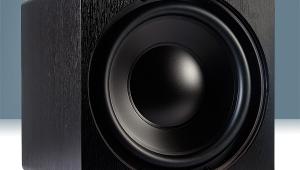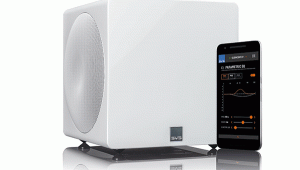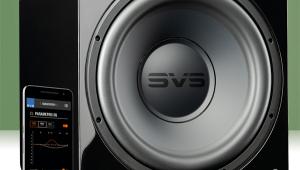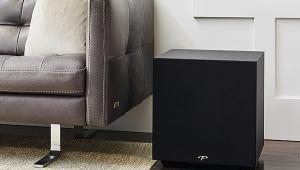SVS PB16-Ultra/SVS SB16-Ultra subwoofer review
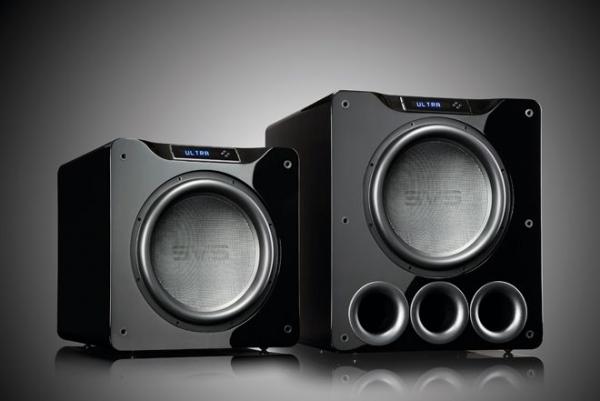
 Bass is a vital part of the home cinema package. Hefty, heaving, humongous low-frequencies are guaranteed to add scale and impact to a surround sound experience, in a way that crystalline high frequencies or robust dialogue just don't. For some AV enthusiasts, their subwoofer is their favourite toy.
Bass is a vital part of the home cinema package. Hefty, heaving, humongous low-frequencies are guaranteed to add scale and impact to a surround sound experience, in a way that crystalline high frequencies or robust dialogue just don't. For some AV enthusiasts, their subwoofer is their favourite toy.
In that regard, the latest bass boxes from US speaker/sub brand SVS are a hoot to play with. But like all good toys they have a serious side. And they're somewhat expensive.
The £3,000 PB16-Ultra and £2,500 SB16-Ultra are SVS's largest subwoofers yet in terms of driver design, outranking the previous PB13/SB13 models. Both use a new front-firing 16in woofer, hewn from a composite fibreglass resin material that the brand claims offers an 'optimal stiffness to mass ratio' for efficient air movement with control and lack of distortion. Working away behind the scenes are an 8in edge wound voice coil and quartet of ferrite magnets. In combination with the driver's fat rubber surround, the result is a suggested peak excursion of 3.7in.
Of course, the difference between the two is cabinet design. The PB16-Ultra is a triple ported box, while the SB16 is sealed. Subsequently, to find space for all that airflow, the former is considerably larger, measuring 63.5cm high, 55cm wide and 78cm deep. Which, to put it another way, is likely to be bigger than most people's current subwoofers. The SB16-Ultra is squatter and almost 30cm less deep, and will be a much more natural fit in most setups. It's still not petite, though.
Shared across both subs is SVS's Sledge DSP amplifier, in this iteration rated at 1,500W continuous (and 5,000W peak) output.
Connectivity is the same on both models too, comprising stereo line-level input/output, LFE input and stereo balanced input/output for those with compatible processors. There's also a 12V trigger.
The back panel is somewhat unusual in that there are no dials for crossover, gain and phase. Step in SVS's iOS/Android app, which offers full control over such parameters plus parametric EQ, polarity and room gain compensation. There's also a front control panel with blue LED display – make an adjustment in the app and the panel notifies you.
The PB16-Ultra and the SB16-Ultra both launched at the CEDIA show in the US in September, were given a further unveiling at CES and have now made it across the Pond. To demo both of them together, we set up an audition at the cinema room of installer Media Frenzy, nearby to SVS's UK distributor Karma-AV.
Let's get tanked upI began with the PB16-Ultra, running with a surround set of Revel speakers and Primare amplification. I could have started with the smaller, sealed version, but wanted to kick things off with a bang. Or boom.
The WW2 tank actioner Fury provides ample moments for the monster SVS to flex its muscles, and the woofer does so with enough might and muscle to be truly terrifying. Bass tumbles forth from its oversize, front-facing driver into every corner, imbuing each low-end effect with delicious weight and scale, without a trace of distortion or cabinet interference.
During the sequence where Brad Pitt's tank crew head across the field to engage German troops sheltered in a tree line, the PB16-Ultra showcases slam, speed and depth. The latter is present in the rumble of the Sherman M4's caterpillar tracks; this metal machine sounds big and present in the room, simply much bigger than you get on smaller, more affordable subs. And it delivers bass that you feel as well as hear.
The sound of artillery hitting the outside of Fury (the name of the tank) has a short, bouncy thud; this is followed by a huge boom as our heroes retaliate with a 76mm gun, and then bursts of machine-gun fire which hit quick and hard. That 16in driver may be large, but it isn't slow.
Edge of Tomorrow offers an LFE masterclass, and a nice surprise right at the film's beginning. As the opening Village Roadshow logo flickers on screen, the sound designers add a portentous sequence of varied low-frequency tones, signalling the alien invasion drama to come. They're mixed deep and loud, and the PB16-Ultra has the reach to handle each tone in succession, including the oh-so-low final note, its driver rollicking in its surround, relishing the sub-bass challenge without losing grip.
Cut to the initial drop-ship sequence and mimic fight ('drop or die!') and the PB16-Ultra continues to ratchet up the drama, supplying rich notes to the moody orchestral soundtrack, lowly rumbles to the background carnage and a massive slam as Emily Blunt emerges from a wreck and then dies (but doesn't...). It's jaw-on-the floor stuff.
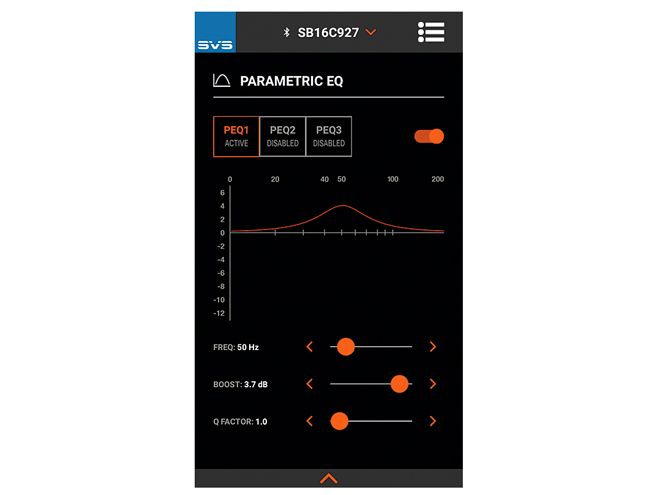
The PB16-Ultra, then, is a subwoofer for people who really love subwoofers. The SB16-Ultra, on the other hand, is for people who also really love subwoofers, but have a fondness for money and a tidy front room, too.
The two products look different and they sound different also. It's much as you'd probably expect, with the sealed version not carrying its output to quite the same levels of heart-stopping depth, but appearing to have marginally more control. Everything is just a little tighter.
For instance, the tank attack sequence in Fury again casts artillery blasts and shell ricochets with punch and depth, but sounds a little less off-the-leash and not quite as deep. Conversely, there's more of a synergy and coherence between sub, speakers and onscreen action.
With Edge of Tomorrow, it again handles the ultra-low tones at the beginning, and better delivers the varied chaos of the drop-ship scene.
Comparing both with the opening swell of the Gravity soundtrack, which cuts to utter silence, finds them stopping with just the tiniest, barely noticeable overhang.
And, again, there's the beauty of its tone to bathe in. It's a distortion-free, full-bodied experience, without the dryness or lack of nuance of less well-engineered rivals.
The Bluetooth app is perhaps the least impressive part of the PB16-Ultra/SB16-Ultra package. It's easy to read and won't take you long to get used to (there's an in-app tutorial to guide you), but I did find it sometimes being laggy in operation and had some 'not-in range' drop-outs despite standing right next to the woofer. Also, the sliding scales on the parametric EQ system are quite fiddly to operate on a smartphone. A phablet or tablet will provide a better touchscreen canvas.
As for that parametric EQ, there are three memory slots that can be customised to your tastes, with +6dB/-12dB adjustment along the frequency range, with Q-factor tweaking too (letting you select the narrowness of the curve you introduce). By all means you can play around, but the idea here is to combine EQ adjustment with an in-room frequency analysis.
There are two preset EQ modes to choose from straight off – Movie (which is unadulterated) and Music (which adds a gentle bump at 63Hz). I'd suggest following SVS's advice and using them as advertised, as the Music option seemed to lend a warmer, rounder edge to, for example, the repetitive basslines in 2Pac's hip-hop groove Picture Me Rolling. Both presets are set to -10dB, which you might want to override.
Choose your weaponIf previous sales figures are anything to go by, SVS will sell a good deal more of the sealed version of its new flagship than the ported. It's easy to see why: the SB16-Ultra saves you £500, comes in a more manageable package and remains a brilliant subwoofer that's fast, controlled and can sniff out genuine sub-bass moments in your BD collection. The PB16-Ultra, meanwhile, is built for those whose rooms can handle its fear-inducing SPLs, and don't mind a bit of a wild ride.
And whichever you go for, get the black gloss version rather than the black ash – it looks smarter.

SVS PB16-Ultra
Price: £3,000
www.karma-av.co.uk
We say: A genuine bass behemoth that will suit owners of large theatres and those that like a bit of terror with their Blu-rays. Simply too big to smuggle into a living room setup...
HCC Verdict: 4.5/5
 SVS SB16-Ultra
SVS SB16-UltraPrice: £2,500
www.karma-av.co.uk
We say: Smaller in stature and output than the PB16, but still a stonking performer that's speedier and sounds more controlled. And it's more affordable, too.
HCC Verdict: 5/5
SVS PB16-Ultra Specifications
Driver units: 1 x 16in fibreglass resin composite woofer, with 8in edge wound voice coil
Enclosure: Triple-front-ported
Frequency response (claimed): 15Hz-280Hz (+/-3dB, standard mode); 13Hz-280Hz (+/-3dB, extended mode); 14Hz-360Hz (+/-3dB sealed mode)
On board power (claimed): 1,500W continuous, 5,000W peak
Remote control: Yes, plus SVS app
Dimensions: 551(w) x 635(h) x 784(d)mm
Weight: 79.1kg
Connections: LFE input; stereo line-level input; stereo line-level output; stereo balanced input; stereo balanced output; 12V trigger input
Driver units: 1 x 16in fibreglass resin composite woofer, with 8in edge wound voice coil
Enclosure: Sealed
Frequency response (claimed): 16Hz-460Hz (+/-3 dB)
On board power (claimed): 1,500W continuous, 5,000W peak
Remote control: Yes, plus SVS app
Dimensions: 495(w) x 508(h) x 510(d)mm
Weight: 55.3kg
Connections: LFE input; stereo line-level input; stereo line-level output; stereo balanced input; stereo balanced output; 12V trigger input
 |
Home Cinema Choice #351 is on sale now, featuring: Samsung S95D flagship OLED TV; Ascendo loudspeakers; Pioneer VSA-LX805 AV receiver; UST projector roundup; 2024’s summer movies; Conan 4K; and more
|






